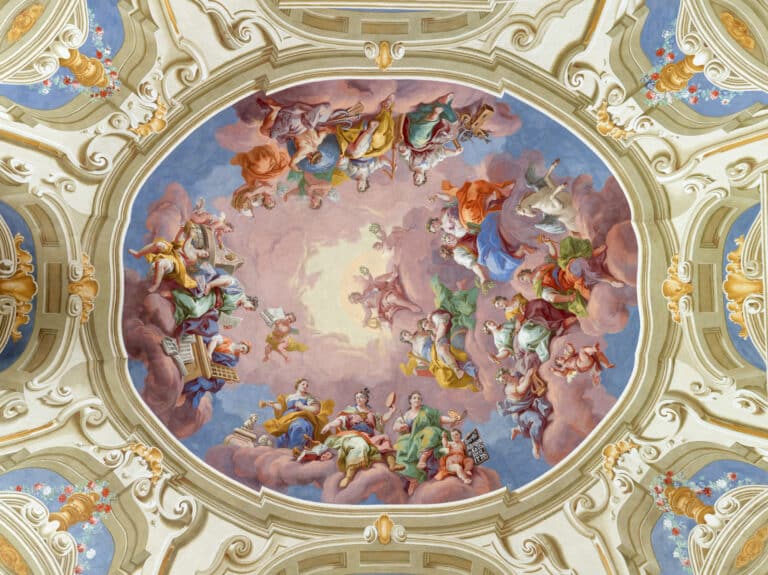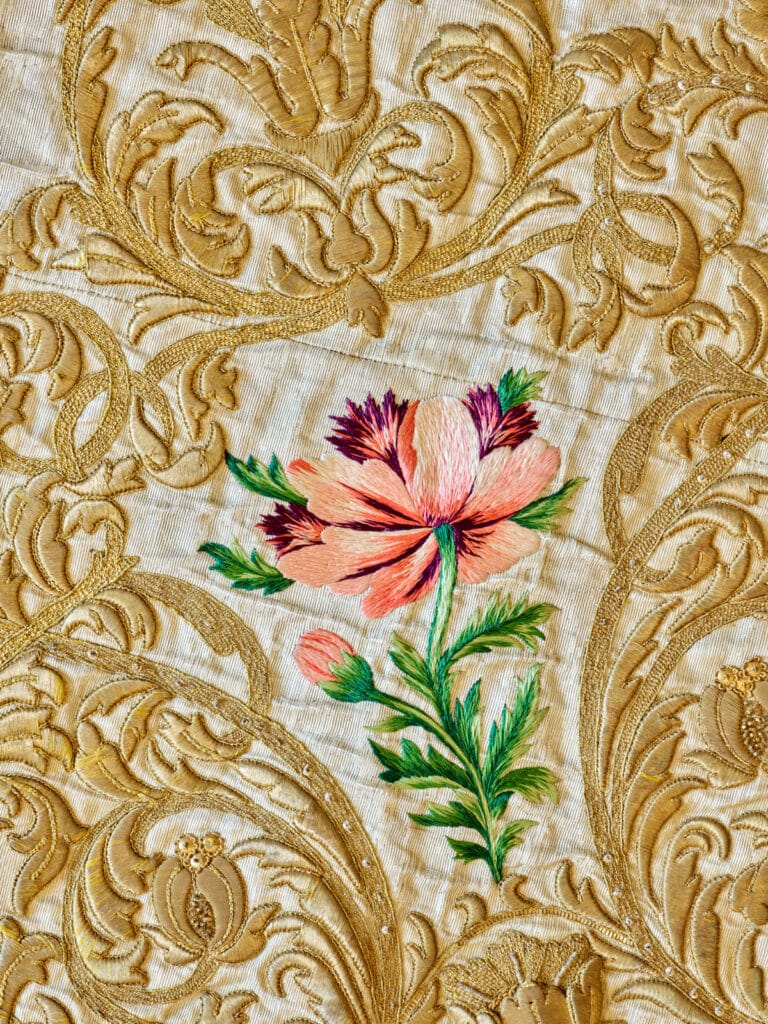Admont and its colours: Mineral pigments
Thursday, 20.08.2020
No surprise: the world around us is full of colour.
A glance at the ceiling of the library hall in Admont can easily underline this simple realisation. You can actually still see the original colour pigments applied by Altomonte. The fact that they still shine so clearly today is not only due to careful cleaning a few years ago. The actual reason for this still impressive freshness lies in the fact that many genuine natural colours were used, pigments of a primarily mineral and natural-organic nature, which can retain their luminosity for a long time. Looking at Altomonte's work, one also begins to understand that knowledge of these colours, or rather their composition and production, was a carefully guarded secret of the artists of the time in terms of originality, which was taken to the grave without hesitation.
It was the Italian painter Cennino Cennini who first revealed a cautious insight into the world of colour cuisine in his manual written around 1400. Although the work was initially only distributed in a few copies, it turned out to be an influential textbook on painting in the late Middle Ages. Even today it is still of importance, at least art forgers could use it as an extremely instructive source of information if required.
Nevertheless, the use of colour is fundamentally more than ancient. The colour pigments in the rock paintings of our distant ancestors give us a vivid idea of this. Earth colours such as green earth, ochre or umber were used in the cave worlds, as well as charcoal or bone charcoal when black manganese dioxide was not available. For the cave painters, the red colour of ochre may also have had a religious background. They apparently attributed life-affirming properties to it, which is why depictions of animals were often made in this colour and the deceased were occasionally buried in red ochre. The artists of the Stone Age achieved adhesion to the rough rock surface primarily by using lime and water as a binding agent for the pigments.
The use of body colour is also ancient and is not limited exclusively to war paint and special festivities. Even the Bible in the 2nd Book of Kings (9:30) states with some irritation: "... when Jezebel heard it, she covered her eyes with colour". However, following a fashion trend among her neighbours, antimony, or alternatively pure arsenic, was applied to emphasise the eyes and make them shine brighter. Both are actually questionable substances which, after earth colours and soot, found their way into the lives of colourful people at an early stage. We shouldn't rush to ponder their harmfulness now; in those days of less lavish life expectancy, such risks were the lesser of two evils - and the benefits were tempting.
So where do these mineral colours come from, if not, like lapis lazuli, from distant and therefore extremely expensive Afghanistan? If they are contained in the rocks as iron oxides or iron hydroxides, then these pigments tend to be red. Yellow rocks such as some ochres, on the other hand, tend to contain goethite or clays. If this ochre is subsequently heated naturally or artificially, its red content gradually increases so that different shades of orange can be put together. For the darker, coloured shadows of a coat, for example, Cypriot umber, a relative of ochre, was often used to mix with the original colour. This Cypriot or Turkish umber is still offered for sale at high prices. Brown iron ore, on the other hand, was used to obtain stable brown colours. Rarer, but already indicated by its name, is the astonishing red colouring of the bloodstone, which in itself is silvery-anthracite in colour. Why the name and why red? If you rub this gemstone on a hard, rough and preferably white surface - such as an electrical fuse - or even pulverise the mineral, you get a dark red product similar to drying blood. Unsurprisingly, bloodstone or haematite is also an iron oxide.
Back to the blue colour of lapis lazuli: even today, the value of Fra Angelico blue (lapis lazuli) is roughly equivalent to its weight in gold. The search for the famous "blue glaze", which appears again and again in our legends about the Kasermandln, says a lot about the importance of this colour, especially for the glass industry in Venice (hence the name "Venedigermandln"). However, since Afghanistan is far away and money is as scarce today as it was then, the countries on the Nile were happy to help themselves with a mixture of quartz sand, lime and copper salts, the "Egyptian blue". However, this is a slight departure from the pure, natural mineral colours.
Among the natural pigments, the dark blue copper oxide azurite and the chemically similar green malachite have certainly been part of the human colour palette since time immemorial. The rarer but naturally occurring mineral azurite offers a particularly appealing blue colour with an occasional dark blue appearance. In contrast to the clear green of malachite as a copper mineral, the softer Veronese green is a direct weathering product of predominantly basic rock components such as augite or hornblende. Incidentally, it is not limited to Verona alone. However, the known deposit there on Monte Baldo was already used by the Romans as a green colourant and thus became famous. Other mineral green colourants such as glauconite, fuchsite mica or celadonite are very rarely available. Incidentally, green is hardly ever found in cave paintings.
Last but not least, cinnabar should not be forgotten. It was first discovered in Europe by the Greeks in the 6th century BC. The Romans mined large quantities of the red mercury ore, particularly in Almaden in Spain. The pigment extracted from the mineral cinnabar or realgar was popular and expensive with the Romans, making it highly sought-after. Extensive wall paintings in Pompeii bear impressive witness to this. The disadvantage of this genuine mineral colour: cinnabar gradually darkens, especially when exposed to light, and therefore gradually loses its special radiance. The disadvantage of the latter pigments that we are only realising today is their harmfulness to health, which could affect the work and lives of the ancient masters and their assistants.
In addition to the manganese minerals for the important dark shades, which were briefly touched on at the beginning, there are of course other coloured minerals; one only has to think of gold, much less of the rapidly darkening silver, or of minerals with a spinel structure. It is easy to surmise that, due to the rarity of these mineral colour carriers (ruby and sapphire are spinels), other pigments were used that were somewhat easier to obtain. Unsurprisingly, colours from organic substances such as plants (e.g. saffron) and animals (e.g. purple) also found their way into the colourful world of our ancestors at an early stage. But this is a different, organic story, so to speak.








